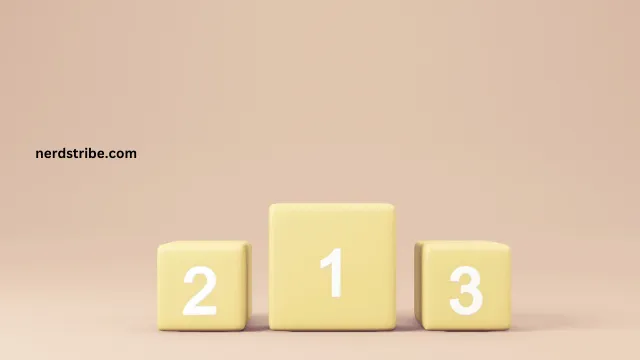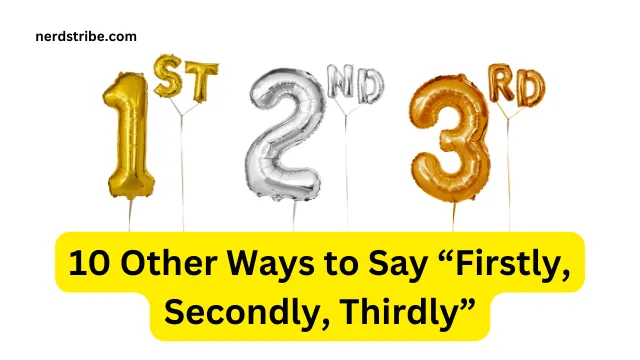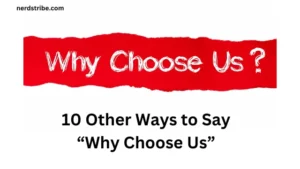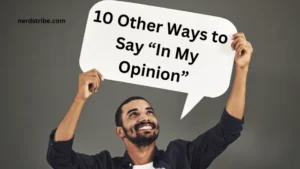Transitions are the unsung heroes of effective communication. Whether you’re writing an essay, delivering a speech, or drafting an email, how you guide your audience from one idea to the next can make or break the flow of your message.
But let’s face it—phrases like “firstly, secondly, thirdly” can feel tired and mechanical, leaving your writing or speech flat and uninspired. What if you had a toolbox of fresh alternatives to breathe life into your transitions?
By swapping out repetitive phrases, you can engage your audience, add variety to your tone, and make your points more memorable. Transitioning between ideas is more than just a technical skill—it’s an opportunity to emphasize connections and structure your message effectively.
This article explores 10 alternative ways to say “firstly, secondly, thirdly,” helping you elevate your communication. From conversational transitions to formal connectors, these options will suit every style and situation, ensuring your ideas shine with clarity and impact.

Contents
- 1 1. To Begin With/To Start
- 2 2. Firstly, Secondly, Thirdly
- 3 3. Next/Then
- 4 4. Following This/Subsequently
- 5 5. Moreover/Furthermore
- 6 6. In Addition/Additionally
- 7 7. Thirdly, Lastly/Finally
- 8 8. In Conclusion/To Conclude
- 9 9. First and Foremost
- 10 10. Primarily/Principally
- 11 Conclusion
- 12 FAQs
- 12.1 Why should I avoid overusing “firstly, secondly, thirdly”?
- 12.2 Which alternative is best for casual writing?
- 12.3 What’s the most formal alternative?
- 12.4 Can I mix these alternatives in one piece of writing?
- 12.5 How do I decide which transition to use?
- 12.6 Are these alternatives suitable for public speaking?
1. To Begin With/To Start
- Focus: These are conversational and approachable ways to start your points.
- Why It Matters: They offer simplicity while setting a clear foundation for your argument.
- Example: “To begin with, we need to establish the scope of the project.”
2. Firstly, Secondly, Thirdly
- Focus: Tried and true for formal or structured communication.
- Why It Matters: These phrases provide a familiar framework for organizing ideas.
- Example: “Firstly, let’s address the challenges. Secondly, we’ll explore solutions. Thirdly, we’ll finalize the plan.”
3. Next/Then
- Focus: Ideal for casual writing or speech where brevity is key.
- Why It Matters: These transitions keep your message flowing naturally.
- Example: “Next, we’ll discuss the budget. Then, we’ll move on to the timeline.”
4. Following This/Subsequently
- Focus: Highlights logical progression in a slightly formal tone.
- Why It Matters: They maintain a polished feel while emphasizing sequence.
- Example: “Following this analysis, we’ll look into alternative strategies. Subsequently, we’ll make a decision.”
5. Moreover/Furthermore
- Focus: Great for adding supporting arguments or reinforcing points.
- Why It Matters: They make your argument feel comprehensive and well-supported.
- Example: “Moreover, the data supports this conclusion. Furthermore, similar studies have yielded comparable results.”

6. In Addition/Additionally
- Focus: Suitable for introducing complementary information.
- Why It Matters: They allow you to seamlessly expand on your points.
- Example: “In addition to cost savings, this approach boosts efficiency. Additionally, it reduces environmental impact.”
7. Thirdly, Lastly/Finally
- Focus: Clearly signal the end of a sequence.
- Why It Matters: These phrases help wrap up lists and give your audience closure.
- Example: “Thirdly, we’ll finalize the project. Finally, we’ll prepare for the launch.”
8. In Conclusion/To Conclude
- Focus: Perfect for summarizing or emphasizing your final point.
- Why It Matters: They transition smoothly into concluding remarks.
- Example: “In conclusion, this strategy offers the best balance of cost and efficiency.”
9. First and Foremost
- Focus: Places special emphasis on the primary point.
- Why It Matters: It makes your audience pay extra attention to what comes next.
- Example: “First and foremost, we must prioritize customer satisfaction.”
10. Primarily/Principally
- Focus: These introduce the main or most critical point.
- Why It Matters: They convey focus and clarity, especially in formal contexts.
- Example: “Primarily, our goal is to achieve sustainable growth.”
Conclusion
Strong transitions are essential to keeping your audience engaged and ensuring your ideas are clearly communicated. By replacing “firstly, secondly, thirdly” with these alternatives, you can enhance the flow, tone, and impact of your message.
Whether you’re writing an academic paper, giving a business presentation, or just explaining your thoughts, these phrases add variety and sophistication.
Remember: The best transitions depend on the context, tone, and purpose of your communication. Experiment with these options to find the ones that best suit your style. With practice, your transitions will no longer feel like fillers but become tools to guide and captivate your audience.
FAQs
Why should I avoid overusing “firstly, secondly, thirdly”?
Repetition can make your communication feel monotonous and robotic. Alternatives add variety and keep your audience engaged.
Which alternative is best for casual writing?
“To start,” “next,” and “then” are great for casual, conversational communication.
What’s the most formal alternative?
“Primarily,” “principally,” and “following this” are ideal for formal contexts like essays or professional reports.
Can I mix these alternatives in one piece of writing?
Yes! Mixing transitions adds variety and ensures your writing remains interesting.
How do I decide which transition to use?
Consider the tone, audience, and context. Use formal options for structured pieces and casual ones for informal writing.
Are these alternatives suitable for public speaking?
Absolutely. These transitions enhance clarity and help listeners follow your points seamlessly.








